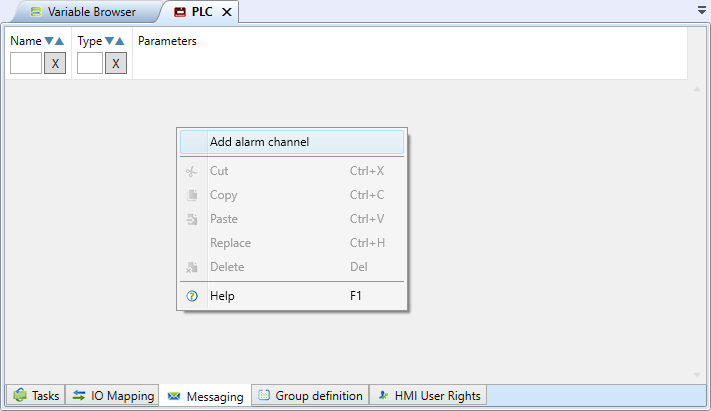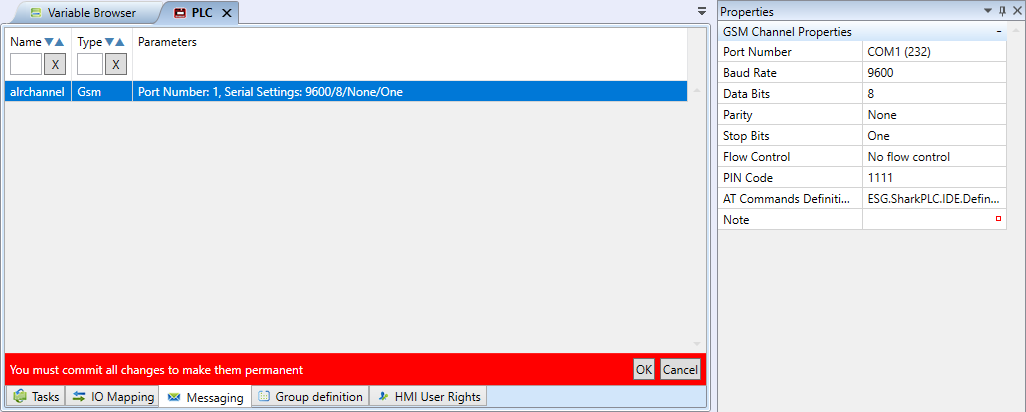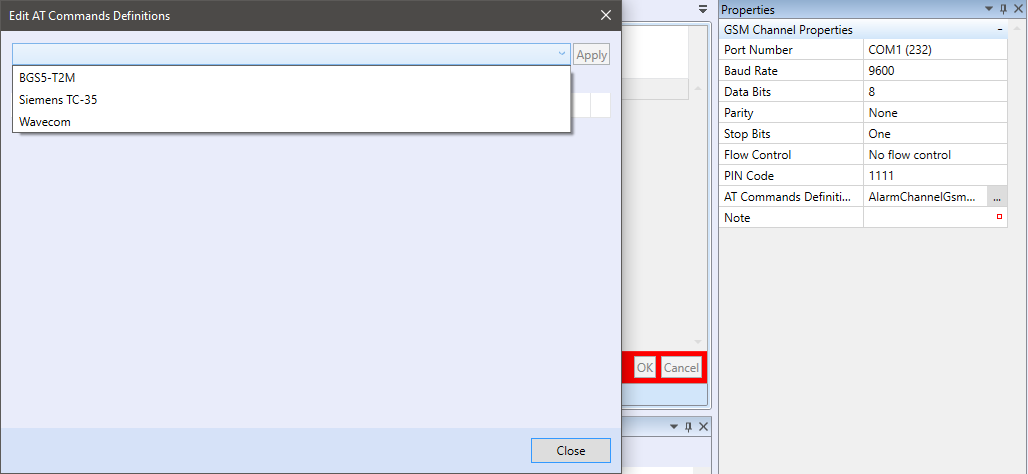Table of Contents
Receive SMS
Block name
RECEIVESMS
ST call
TYPE KRATKY_STRING : STRING[160]; END_TYPE PROGRAM TEST_RECEIVESMS VAR_OUTPUT SMSRES : INT := 0; SMS_RECEIVE : BOOL := FALSE; SMS_CHANNEL : ARRAY[0..9] OF STRING; SMS_SENDER : ARRAY[0..9] OF KRATKY_STRING; SMS_MESSAGE : ARRAY[0..9] OF STRING; RECEIVE_TIME : ARRAY[0..9] OF DT; RESULT : ARRAY[0..9] OF INT; I : INT := 0; END_VAR IF SMS_RECEIVE THEN FOR i := 0 TO 9 DO RESULT[I] := MESSAGING.RECEIVESMS(CHANNEL => SMS_CHANNEL[I], SENDER => SMS_SENDER[I], MESSAGE => SMS_MESSAGE[I], RECEIVETIME => RECEIVE_TIME[I]); END_FOR; SMS_RECEIVE := FALSE; END_IF; MESSAGING.SENDSMS(); END_PROGRAM
Library
MESSAGING
Version
V1.0
Description
The function asks the connected modems for received SMS messages in each PLC computing cycle. This function shall be used in ST code only, so that the function is called only if the incoming SMS status shall be checked.
Outputs
| Output | Type | Description |
| ⇒ | INT | numeric status; result of the system settings check |
| CHANNEL | STRING | channel at which the SMS modem is connected |
| SENDER | STRING | SMS message sender number |
| MESSAGE | STRING | received SMS message text (ASCII) |
| RECEIVETIME | DT | time of SMS receiving |
Function
The receivesms checks the connected modem for SMS messages. The output is the channel number channel from which the message was read, message sender number sender, time when the SMS was received receivetime, the SMS message itself message, and result of reading.
The channel variable refers to the defined communication connection. This must be created in the PLC Properties menu: doubleclick the PLC and select Message definition, then right-click the context menu and Add alarm channel.
Now, define the channel name which is the value of the channel variable. Then, the GSM connection type must be defined: click to select the channel and set the port to communicate to the modem in the channel properties. Set the channel communication properties. If the SIM card is secured by a PIN, enter the PIN here. Finally, confirm all changes by clicking OK in the red dialogue.
If some of the predefined modem types is used, like Siemens TC-35 chipset, or Wavecom, it is possible to set in the AT command settings predefined commands to set up the modem. Then click the Apply button. The necessary AT commands are then added to the table. Click the Close button and confirm by clicking OK in the red dialogue. If another modem type is used, the AT command sequence has to be entered manually. (In case of unsupported modem types please contact the Domat Control System technical support.)
The output variable result indicates the result of the system settings check.
| Value | Description |
| 0 | OK |
| 16 | Unknown channel |
| 24 | Error - impossible to determine the status |
| 25 | Port can not be opened or modem can not be initialised (e.g. wrong COM port number) |
| 26 | Timeout at the AT command (default 2 s) |
| 31 | No message |
| 42 | GSM channel error (e.g. wrong PIN, network not available …) |
| other | Internal error - contact Domat Control System support |
Application example
This function may be used to enter a string to the PLC using a SMS message. See ST call above. Standard number of 10 storage positions is used, where the received SMS messages are stored. All corresponding positions in the sms_receive, sms_channel, sms_sender, sms_message, receive_time, and result variables are parameters of a single SMS message. Currently read SMS messages have 0 in results. If there is another value on any of the results position, the SMS message could not be read from this position and in the corresponding sms_receive, sms_channel, sms_sender, sms_message and receive_time fields are either empty, or they contain the last message which was stored there. Maximum SMS length is 160 characters.



